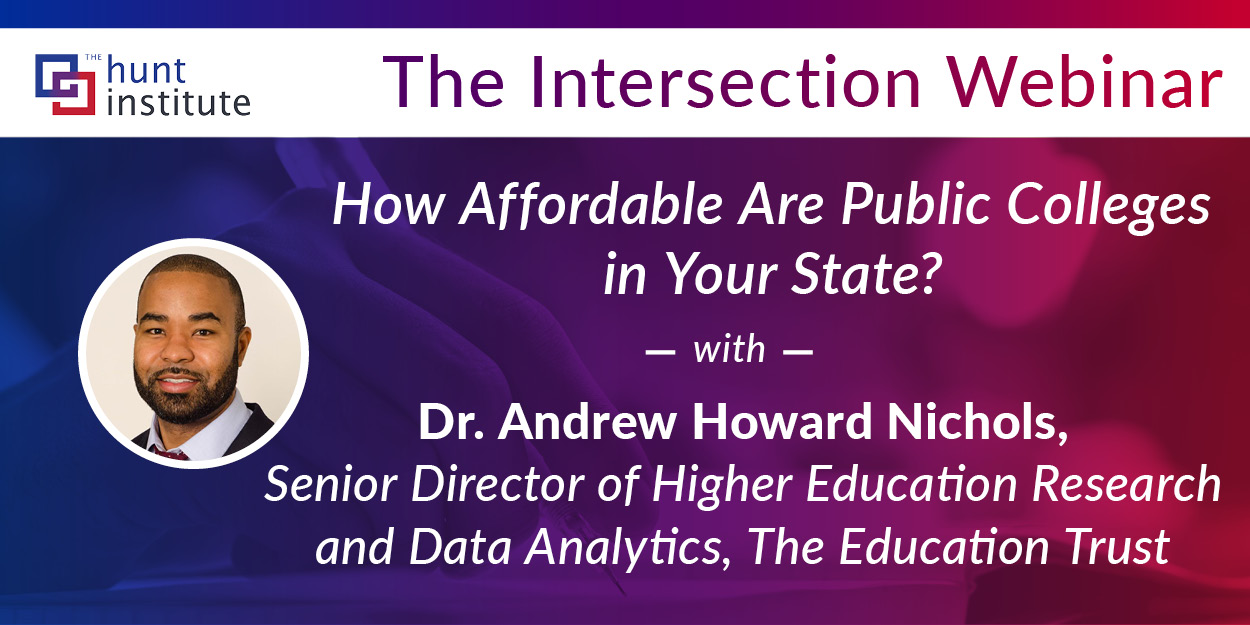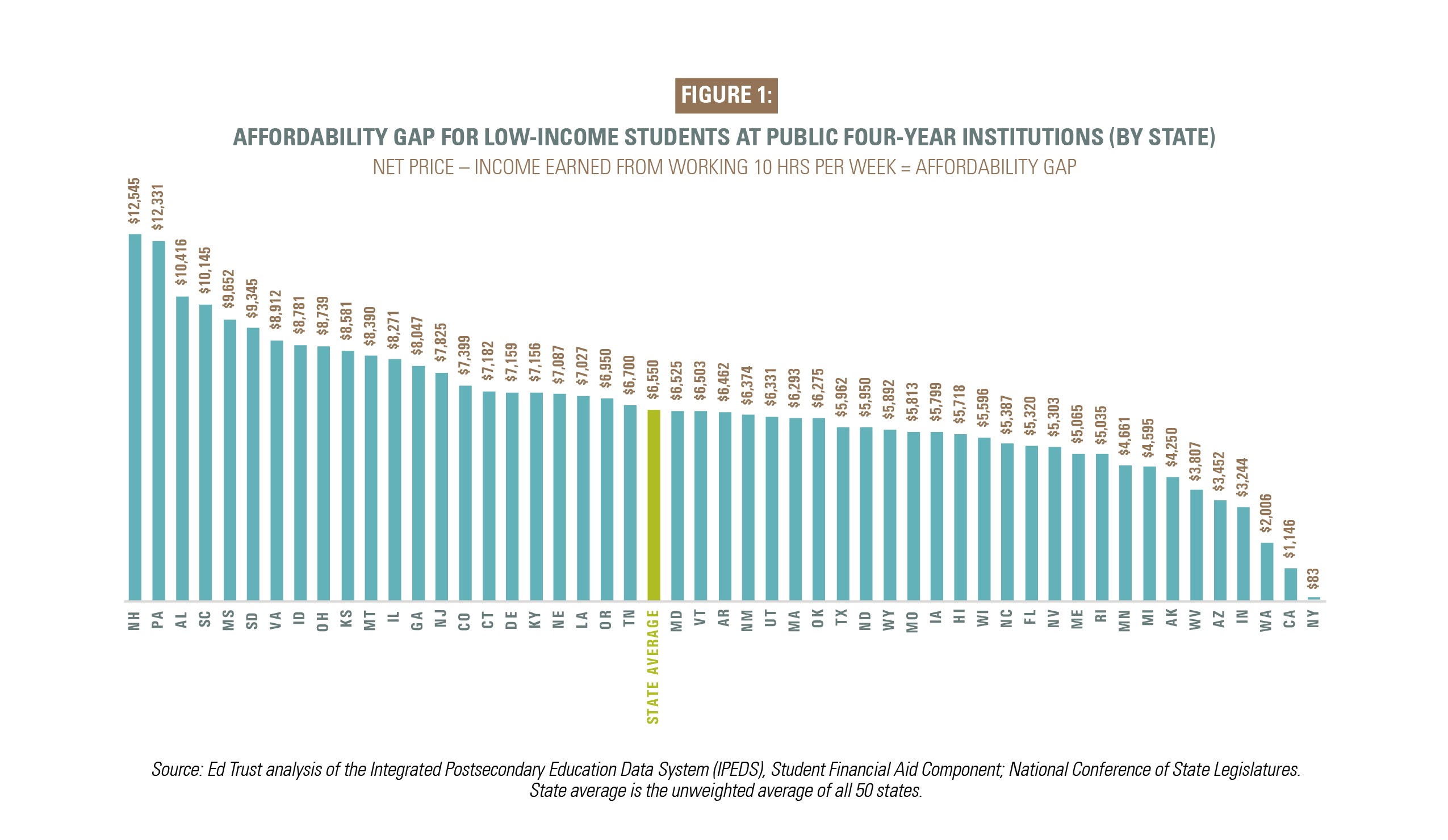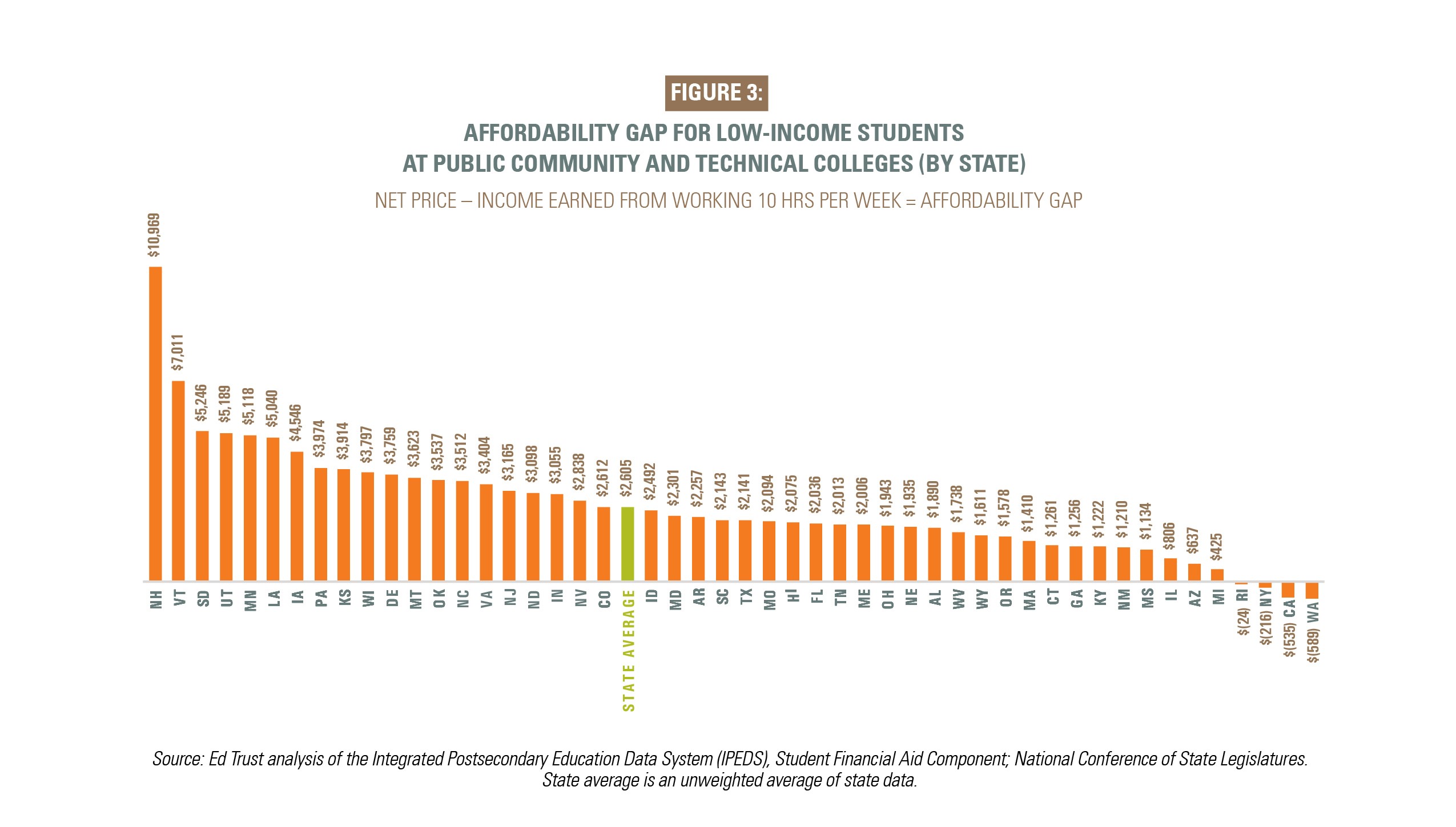
It is no secret that the cost of higher education in the United States is a significant barrier for postsecondary attainment, especially for low-income students. Even with need-based aid covering tuition, many students are forced to get a job to offset the cost of other fees, books, and room and board. When students must work an excessive number of hours per week, it leaves little time to focus on their studies and affects their chances of graduating. This is especially true for low-income students.
This week, we were joined at the Intersection by Dr. Andrew Howard Nichols, Senior Director of Higher Education Research and Data Analytics at The Education Trust, to share the findings of his recent report, How Affordable are Public Colleges in Your State for Low-income Students?. Using minimum wage threshold and institution-level net price data, researchers were able to quantify affordability of public four-year institutions and community and technical colleges across all 50 states. The data from this report is included as part of EdTrust’s State Equity Report Card, which assesses states’ commitment to equitable college opportunity and success for Black Americans and Latinos.
Key Takeaways
- For a college degree to be affordable, low-income students must need to work less than 10 hours per week, have aid to cover all educational expenses, and be able to complete their degree without incurring student debt.
- To quantify affordability, researchers used net price estimates (the total cost of attendance after receiving grants and scholarships) minus the income earned from working 10 hours per week at the state’s minimum wage.
- The affordability gap for low income students at public four-year institutions is, on average, $6,550, and in New Hampshire, Pennsylvania, Alabama, and South Carolina, this figure exceeds $10,000.

- On average, low-income students must work 26 hours per week to pay the net-price of attending at a public four-year institution. In 47 states, they must work more than 15 hours per week.
- The affordability gap for low income students at public community colleges is $2,605, and in five states the figure exceeds $5,000.

- Even in community colleges that are a fraction of the cost of four-year institutions, low income-students must work more than the recommended 10 hours per week in 46 states.
- The affordability crisis is likely more severe than what the data shows, as the study does not include part-time, transfer, or undocumented students who are ineligible for federal aid. Additionally, the analysis assumes that all student earnings are going toward paying for school and does not account for taxes or other expenditures.
Policy Recommendations
Policymakers should:
- Invest in need-based aid, including at minimum doubling federal Pell Grant offerings, and prioritizing need-based aid over merit-based aid at the state level.
- Ensure that approaches to free college programs cover the full cost of attendance, not just tuition, for low-income students.
- Reinvest in higher education at the state level to bringi total state investment to pre-Great Recession levels.
For our full conversation with Dr. Nichols, please watch the webinar below.

Join us on Wednesday, April 8, 2020 at 1 p.m. ET for the next installment of the Intersection webinar!
See you at The Intersection!

The Hunt Institute team





